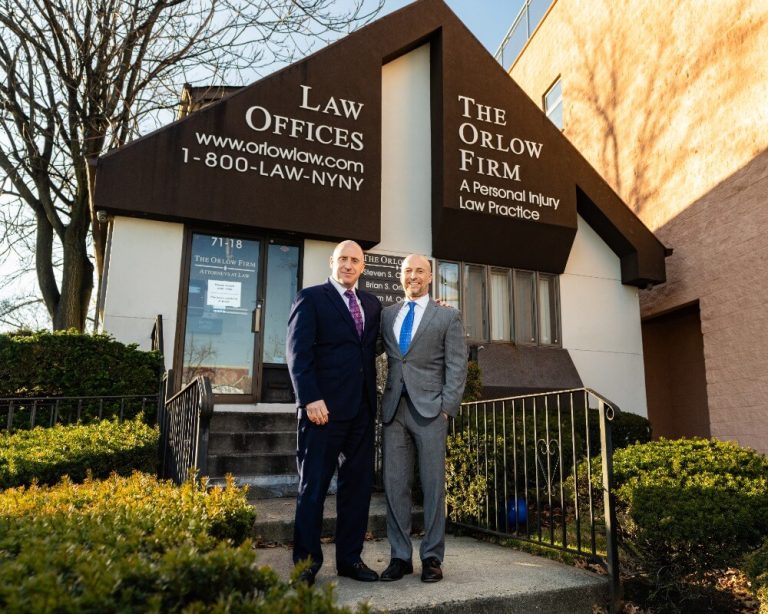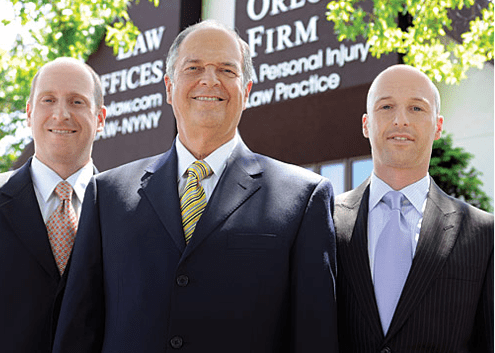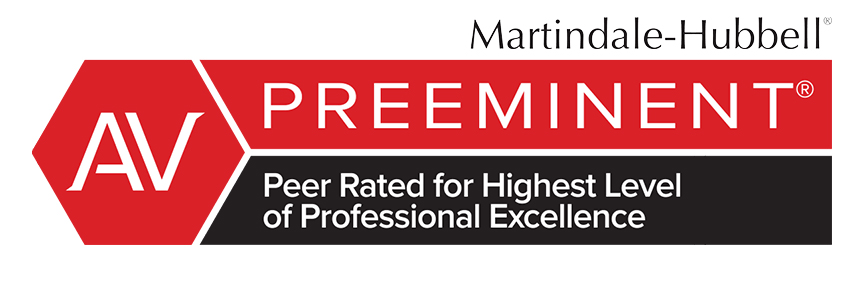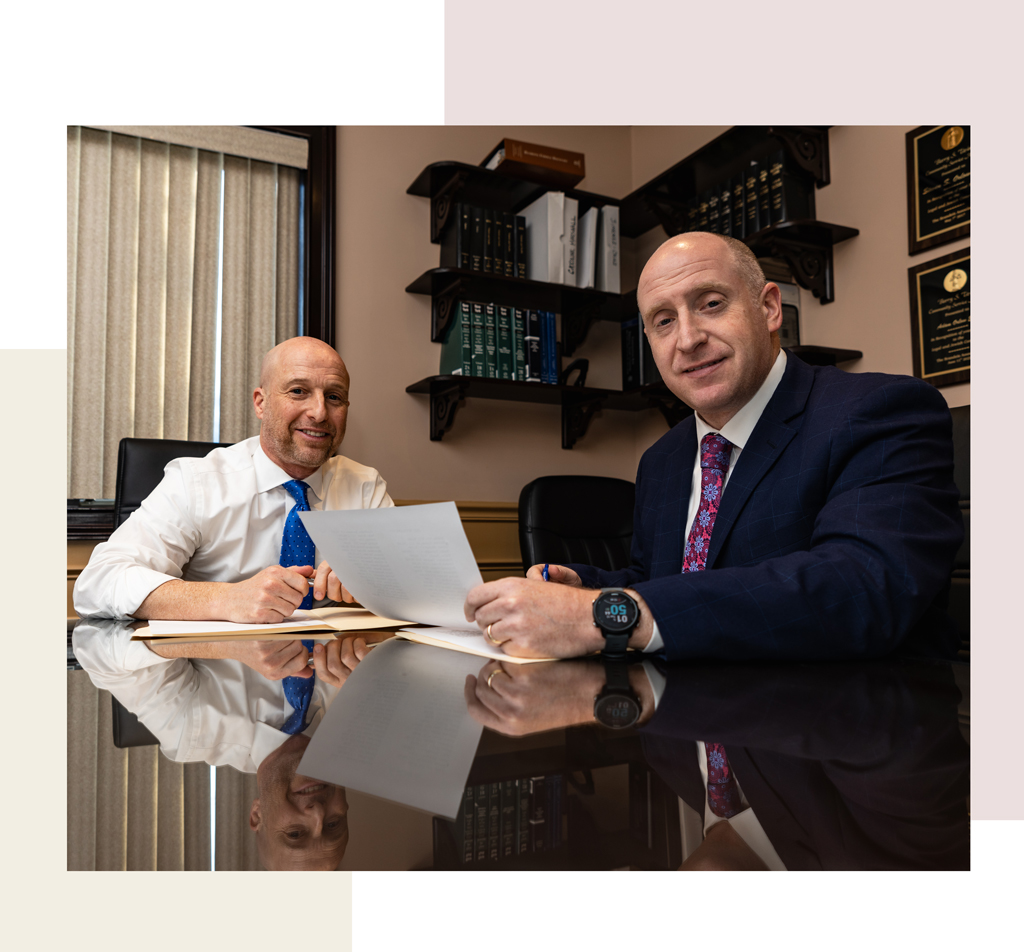The Following People Contributed to This Page
Cindy Cordova is a seasoned legal writer with over seven years of experience crafting clear, informative, and professional content for law firm websites. With a B.A. in English from Trinity Christian College, she combines her strong writing background with a deep understanding of legal topics to help firms connect with their clients through trustworthy and accessible content.
- June 25, 2025
What Is a Motion in Limine in a New York Personal Injury Case?
Quick Answer: In New York personal injury cases, a motion in limine is a pre-trial motion seeking to exclude certain evidence from being presented to the jury. These motions are typically filed before trial and aim to prevent the introduction of evidence that could unfairly prejudice the jury against a party.
Here’s a more detailed explanation of motion in limine:
- Purpose: The primary goal of a motion in limine is to prevent the jury from hearing or seeing potentially harmful or irrelevant evidence that could unfairly sway their decision-making process. It helps ensure that only admissible and pertinent evidence is considered during the trial.
- Timing: Motions in limine are usually filed and argued before the trial officially begins. However, they can also be made during the trial itself, just before the disputed evidence is about to be presented.
- Examples: In personal injury cases, motions in limine might be used to prevent the mention of various types of information, such as:
- The plaintiff’s prior accidents, injuries, or unrelated medical history.
- The defendant’s wealth, financial status, or the existence of insurance coverage.
- The plaintiff’s prior criminal record or unrelated bad acts that are not relevant to the current case.
- Why It Matters: Even if a judge instructs the jury to disregard certain evidence, simply hearing or seeing it can create a lasting impression and unfairly influence the jury’s verdict. By addressing these issues beforehand, motions in limine help ensure a fairer trial. It’s important to note that a judge might not rule definitively on a motion in limine immediately, sometimes preferring to wait for the context of the trial to fully develop before making a final decision.
- Appeal: An adverse ruling on a motion in limine can, in certain circumstances, be a basis for appeal if it affects a substantial right of one of the parties and is deemed to have prejudiced the outcome of the trial.
To learn more about how legal strategies like this can support your case, contact our NYC personal injury attorneys at (646) 647-3398 for a free consultation.
Why Are Motions in Limine Filed Before a Trial Starts?
A motion in limine is filed before a personal injury trial starts because it helps the court decide what evidence can or cannot be used during the trial. These motions are important because they help keep the trial fair and focused only on the facts that are legally allowed to be considered by the jury.
Here are some key reasons why motions in limine are filed before a trial begins in New York City personal injury cases:
- To Exclude Unfair or Harmful Evidence: Some evidence, even if true, may be unfair or misleading. For example, mentioning that a victim had a past criminal record might create bias, even if it’s not related to the injury case. A motion in limine can ask the judge to keep that information out of the trial.
- To Prevent Surprise: Both sides should know in advance what evidence will be used at trial. Filing a motion before trial helps avoid surprise or confusion that could delay the process or hurt someone’s case unfairly.
- To Follow the Rules of Evidence: All trials must follow rules about what types of evidence are allowed. Some evidence might be hearsay (something someone else said outside of court) or irrelevant (not connected to the injury or event). A motion in limine can stop this type of evidence before it reaches the jury.
- To Make Trials More Efficient: Deciding on evidence issues early can save time during the trial. Instead of arguing in front of the jury, the lawyers and judge can handle these matters beforehand during pre-trial hearings.
- To Protect the Rights of Injury Victims: In personal injury cases, the injured person might be unjustly blamed. A motion in limine can remove comments or documents meant to cast unfair doubt on a victim’s character or claim.
For example, in a slip and fall case in a Bronx grocery store, the store’s lawyers might try to bring up the injured person’s financial history to suggest they are suing just for the money. A motion in limine can be used to block that kind of argument if it has nothing to do with how the injury happened.
By filing these motions before the trial starts, both parties—especially injury victims—get a fairer trial. It helps ensure the jury only hears what’s relevant, reliable, and according to the rules.
If you or a loved one is preparing for a personal injury trial in New York City and have questions about what evidence may be used or challenged, The Orlow Firm is here to help. Call (646) 647-3398 for a free, confidential consultation.
How Can a Motion in Limine Affect the Outcome of Your NYC Injury Trial?
A motion in limine can play a big role in how your NYC personal injury trial unfolds. This legal motion is used to ask the court to exclude certain evidence before the trial begins. That means some information—like photos, witness statements, or past events—might be kept out of the courtroom if the judge agrees it’s not fair or relevant.
This can have a powerful effect on your case for several reasons:
- It keeps unfair evidence out of court: Some evidence might be misleading, overly emotional, or unrelated to your injury. If it could unfairly influence the jury, a motion in limine can help block it.
- It helps focus the jury on facts: By removing confusing or unrelated details, the motion allows the jury to focus on what really matters—how your injury happened and what harm it caused.
- It prevents delays during trial: When tricky evidence issues are handled before the trial starts, it saves time. This means your case may move along more smoothly.
- It may improve your chances of a fair outcome: Judges and attorneys use motions in limine to shape the trial. Keeping inappropriate or harmful evidence out can make the trial fairer and help the jury reach an accurate decision.
For example, imagine you’re injured in a slip and fall on a wet floor in a Bronx grocery store. The store wants to bring up your old sports injury from ten years ago. Your lawyer could file a motion in limine to stop that from being discussed if it has nothing to do with your current injury. If granted, the jury wouldn’t even hear about that old injury—which could prevent confusion or bias.
In personal injury cases across New York City, motions in limine are a key part of trial strategy. When used correctly, they help level the playing field and protect your right to a fair trial. If you’re unsure how this affects your case, speaking with a personal injury attorney can provide valuable clarity.
For more guidance, contact The Orlow Firm at (646) 647-3398 to schedule a free consultation with a member of our legal team.
What Types of Evidence Can Be Excluded with a Motion in Limine?
A motion in limine is used to ask the court to block certain evidence from being shared during a trial. In a New York City personal injury case, this can be very important. Certain types of evidence can hurt your case, even if they are unfair or not legally allowed. This motion helps stop that kind of evidence from being shown to a jury.
Here are some common types of evidence that may be excluded with a motion in limine:
- Past criminal history: A person’s old criminal record is often not related to the injury case and could unfairly influence the jury.
- Prior lawsuits or claims: If the injured person has filed other claims before, this may be brought up to damage their credibility, even if those past claims were legitimate.
- Unrelated medical history: Medical records that do not relate to the injury in question can confuse the jury or make them think the injury existed before the incident.
- Speculative expert opinions: Experts must base their opinions on facts. If their testimony is based on guesswork, it can be challenged and possibly excluded.
- Hearsay: This is second-hand information or quotes from people not in court. In many cases, hearsay is not reliable and is not allowed as evidence.
- Emotionally charged content: Certain photos, videos, or statements can upset the jury and lead them to make decisions based on emotion instead of facts. These may be excluded to keep the trial fair.
- Insurance details: Mentioning whether someone has insurance or how much coverage they have can unfairly impact the jury’s feelings about who should pay damages.
In New York courts, motions in limine must be carefully written and clearly explain why the evidence should not be allowed. These motions are usually filed before the trial begins, giving the judge a chance to decide before the jury hears anything that could be unfair or misleading.
In a crowded and fast-paced place like New York City, jurors come from all walks of life. It’s important to make sure the evidence they see focuses only on facts that matter to your case. A successful motion in limine can help level the playing field and give you a fair chance at trial.
If you have questions about how evidence may affect your personal injury case, don’t wait to get help. Call The Orlow Firm at (646) 647-3398 for a free, confidential consultation.
Who Decides Whether a Motion in Limine Is Granted in New York?
In New York personal injury trials, a judge decides whether a motion in limine is granted or denied. This decision is not made by a jury, lawyers, or either party involved in the case. Once a motion is filed, the judge reviews the legal arguments and decides which evidence can or cannot be shown in court.
The judge’s job is to make sure the trial is fair and stays focused on the facts that matter. A motion in limine asks the judge to rule ahead of time on whether certain evidence should be allowed. This can happen before the trial begins or right before opening statements start.
In New York City, judges in courts like the Supreme Court of New York or Bronx County Civil Court handle many personal injury cases. These judges use their knowledge of New York law to decide:
- If the evidence is relevant – Does the information help prove or disprove a fact in the case?
- If the evidence is unfair – Will the evidence create bias, confuse the jury, or waste time?
- If it follows court rules – Does the evidence meet the legal requirements for personal injury cases in New York?
For example, a judge may decide that past criminal charges unrelated to the case cannot be mentioned, as they could unfairly damage a person’s image without helping the jury decide how the injury happened.
These decisions can shape how the trial unfolds. If the judge grants the motion, that piece of evidence cannot be brought up during the trial. If the judge denies the motion, the other side may use the evidence as part of their case.
Because a judge has the final say, lawyers often prepare carefully and follow strict rules when asking for a motion in limine. This helps protect your rights and ensures the jury sees only fair and legal evidence.
If you have questions about how motions in limine might impact your personal injury case in New York City, The Orlow Firm is here to help. Call (646) 647-3398 for a free and confidential consultation. Our team is dedicated to guiding you through the legal process with care and clarity.
When Is the Best Time to File a Motion in Limine in NYC Courts?
In New York City personal injury cases, a motion in limine is usually filed before the trial begins. The best time to file it is during the pre-trial stage—after discovery is complete but before the jury is selected. This timing allows the judge to decide on the motion before any disputed evidence is shown to a jury.
The exact deadline for filing a motion in limine may depend on the court’s local rules or the judge’s scheduling order. In many NYC courts, these motions are filed:
- At the final pre-trial conference — This meeting is held between the attorneys and the judge to go over how the trial will proceed.
- A few days to a few weeks before trial — The goal is to give the judge enough time to review the request and make a ruling before jury selection starts.
These motions are often based on information gathered during the discovery phase (the part of the case where both sides exchange evidence and take depositions). Once attorneys know what evidence the other side plans to present—including any documents, photographs, or witness testimony—they can argue about what should or shouldn’t be allowed in front of the jury.
For example, if a defense attorney wants to introduce your old medical records that aren’t related to the accident, your lawyer might file a motion in limine to keep that evidence out. To do this effectively, the motion needs to be filed early enough that the court has time to review it before the trial starts.
Filing too late may result in the court refusing to hear it, or the jury seeing harmful information before a ruling is made. That’s why timing is so important—especially in high-stakes personal injury cases in New York City.
If you’re involved in a personal injury case in NYC and are unsure about how your trial might unfold, having skilled legal support can make a big difference. To discuss your case, call The Orlow Firm at (646) 647-3398 for a free consultation.
How Does a Motion in Limine Protect Your Personal Injury Case in NYC?
A motion in limine helps protect your personal injury case by keeping unfair or harmful evidence out of the trial. This motion asks the judge to decide before the trial begins whether certain information can be used in court. In New York City personal injury cases, this can make a big difference in how the jury sees your case.
Here’s how a motion in limine can help your case:
- Prevents unfair evidence from reaching the jury: Some evidence may be misleading, overly emotional, or not legally allowed. For example, a motion in limine can block the use of past arrests or unrelated medical history that has nothing to do with your current injury.
- Keeps the focus on relevant facts: By keeping out extra or confusing details, the jury can focus on the facts that matter—how you were hurt, who was at fault, and what damages you suffered.
- Reduces prejudice: If certain information could unfairly sway the jury against you (even if it’s not important to the case), this motion can help make sure the trial stays fair.
- Improves case strategy: Knowing what evidence the other side can’t use helps your attorney plan your case better. It avoids surprises during trial and allows your side to stay on message.
- Saves time during the trial: By sorting out these issues before the trial starts, a motion in limine helps prevent delays. This means the trial can move more smoothly without constant arguments over what’s allowed in court.
Let’s look at a real-world example. Say you’re suing for injuries after a car accident in Brooklyn. The defense wants to bring up a car accident you had 10 years ago. That old crash has nothing to do with the current one, and it might confuse the jury. Your attorney could file a motion in limine to block that information from being mentioned in court.
In short, motions in limine help keep the trial fair, focused, and based only on the facts that matter. This can be especially important in a New York City personal injury trial, where the court system can be complex and fast-moving.
If you think certain information might hurt your case before a jury, it’s important to talk about it with your lawyer early on. For trusted legal help in protecting your rights, call The Orlow Firm at (646) 647-3398 for a free, confidential consultation.
FAQs About Motions in Limine in New York Personal Injury Trials
Below are some of the most common questions people have about motions in limine during personal injury trials in New York City. Understanding these answers can help you feel more prepared if you’re heading to trial.
- What is a motion in limine? A motion in limine is a legal request made before a trial begins. It asks the judge to keep certain evidence out of the trial. This helps reduce surprises and ensures only fair, allowed evidence is shown to the jury.
- Who usually files a motion in limine? Either side in a personal injury case can file this motion. In many NYC personal injury trials, your attorney may file one to block the other side from using unfair or irrelevant information against you.
- When is a motion in limine filed? These motions are typically filed before the trial starts. The court wants to handle these questions ahead of time so the trial can go smoothly and fairly.
- How does this motion help my injury case? A motion in limine helps protect your case by keeping out evidence that could unfairly influence the jury. This might include things like your criminal record (if it’s unrelated to the case) or private medical history that has nothing to do with your current injuries.
- Can a motion in limine be denied? Yes. The judge reviews the motion and decides whether to allow it. The judge may grant it fully, deny it, or approve only part of it. The decision depends on whether the evidence is relevant and fair to use in court.
- What kind of evidence gets excluded? Common examples include:
- Past medical history not related to the current injury
- Prior lawsuits or accidents
- Criminal records that don’t apply to the case
- Speculative statements, like guessing how someone thinks or feels
- Unreliable expert opinions
- Does this motion guarantee I will win my case? No. A motion in limine can help your case, but it doesn’t make your case a winner on its own. It’s one of many tools used to make sure your trial is fair and legally accurate.
- Is a hearing required for the motion? Sometimes. If the motion is straightforward, the judge may decide based on the written papers. In more complex cases, the court may hold a short hearing where both sides can argue why the evidence should be included or excluded.
Understanding legal steps like motions in limine can make a big difference in how your personal injury trial unfolds. If you have questions or feel overwhelmed by the legal process, contact The Orlow Firm at (646) 647-3398 for a free and confidential consultation.
Contact The Orlow Firm for a Free Consultation About Your NYC Personal Injury Case

Preparing for a personal injury trial in New York City can be overwhelming, especially when it comes to understanding how legal motions like a motion in limine could impact your case. These motions are filed before the trial begins and ask the judge to exclude certain pieces of evidence. If granted, they can keep unfair or unrelated information from being shown to the jury. This can make a major difference in how your case is presented and how the jury views your injuries.
At The Orlow Firm, we help our clients through every step of the legal process—including motions in limine. If you’ve been injured in an accident in New York City and are facing a potential lawsuit, you don’t have to navigate these complex issues alone. Our personal injury attorneys can review your case, explain the legal strategies involved, and make sure your rights are protected in court.
During your free consultation, we can help answer important questions such as:
- What is a motion in limine and should one be filed in your case? We’ll explain whether it makes sense to limit certain evidence to make your case stronger.
- What types of evidence could hurt or help your claim? Understanding this can help you prepare emotionally and legally for the trial.
- How can we work to protect your interests before trial even begins? Pre-trial motions like these are a key part of that process.
Whether your case involves a car accident, slip and fall, construction injury, or another type of personal injury, our firm is here to support you. We take the time to understand your story and use the law to help you pursue fair compensation.
To speak directly with a personal injury lawyer in NYC, call The Orlow Firm at (646) 647-3398. There is no charge for the call, and no obligation to hire us. We are here to listen, provide guidance, and help you understand the next steps in your legal journey.
The Following People Contributed to This Page
Cindy Cordova is a seasoned legal writer with over seven years of experience crafting clear, informative, and professional content for law firm websites. With a B.A. in English from Trinity Christian College, she combines her strong writing background with a deep understanding of legal topics to help firms connect with their clients through trustworthy and accessible content.










